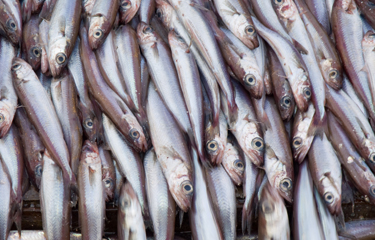Coastal states reach agreements on Atlantic herring, blue whiting, and mackerel quotas

Delegations of coastal states involved in pelagic fisheries in the Northeast Atlantic have reached an agreement on the maximum total allowable catch (TAC) for Atlantic herring, blue whiting, and mackerel in the upcoming fishing season – but now must decide how the quota is divided among them.
In meetings that took place on 17 and 18 October in London, consultations between the various coastal states resulted in TACs for the three species amid persistent calls for action to ensure the fisheries remain with the advice of the International Council for the Exploration of the Seas (ICES). All three of the species have faced sustainability issues for multiple years, with some stocks having lost Marine Stewardship Council certification more than four years ago.
The stocks of the species are divided up between different countries, with the management of mackerel shared between Iceland, the E.U., the Faroe Islands, Greenland, Norway, and the U.K. Delegations of each coastal state eventually agreed that the TAC of mackerel should be set at 739,386 metric tons (MT). That total is in line with ICES advice, and constitutes a decrease from the 782,066 MT quota agreed to for the 2023 fishing year.
Coastal states negotiating the total allowable catch for spring-spawning herring or Atlanto-Scandian herring – Norway, Russia, the U.K., the Faroe Islands, and Iceland – also reached an agreement. The states agreed to set a TAC of 390,010 MT, exactly in line with ICES advice. The new total represents a 24 percent decrease in TAC from the 511,171 MT TAC advised for in the 2023 fishing season.
Finally, coastal states agreed to a 1,529,754 MT quota for blue whiting. The states involved – Norway, the E.U., the U.K., the Faroe Islands, and Iceland – set the quota in line with ICES advice, which represents an increase of 13 percent over the TAC advice for the 2023.
The agreed-upon TACs being in line with scientific advice, however, is nothing new. Coastal states made similar agreements on the TAC in the past, only to later disagree on how to divide up the quota. Coastal states have repeatedly failed at negotiating quota shares between each other. The agreed-upon quota will thus meet scientific advice, but the actual fishing by each state exceeds it.
The consistent overfishing of the stocks has led E.U. fishers to push for action o the stock, and multiple companies – including Biomar, Young’s, and Asda – have all pledged to stop purchasing any fish from the stock if coastal states once again drop the ball on sharing the TAC.
Recently appointed Norwegian Fisheries Minister Cecilie Myrseth said it will be important for states to come to the negotiating table once more – especially for species like mackerel. Mackerel has lost its MSC certification and had its sustainability ratings downgraded, and hasn’t had a quota share agreement since 2020.
“The mackerel stock is one of Europe's most valuable fish stocks, so it is also demanding to agree on how the total quota should be distributed between the parties,” she said. “From the Norwegian side, it is important that the final solution is in line with how much mackerel is actually found in the various economic zones.”
Photo courtesy of Iakov Kalinin/Shutterstock






Share